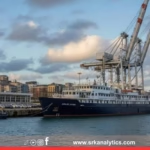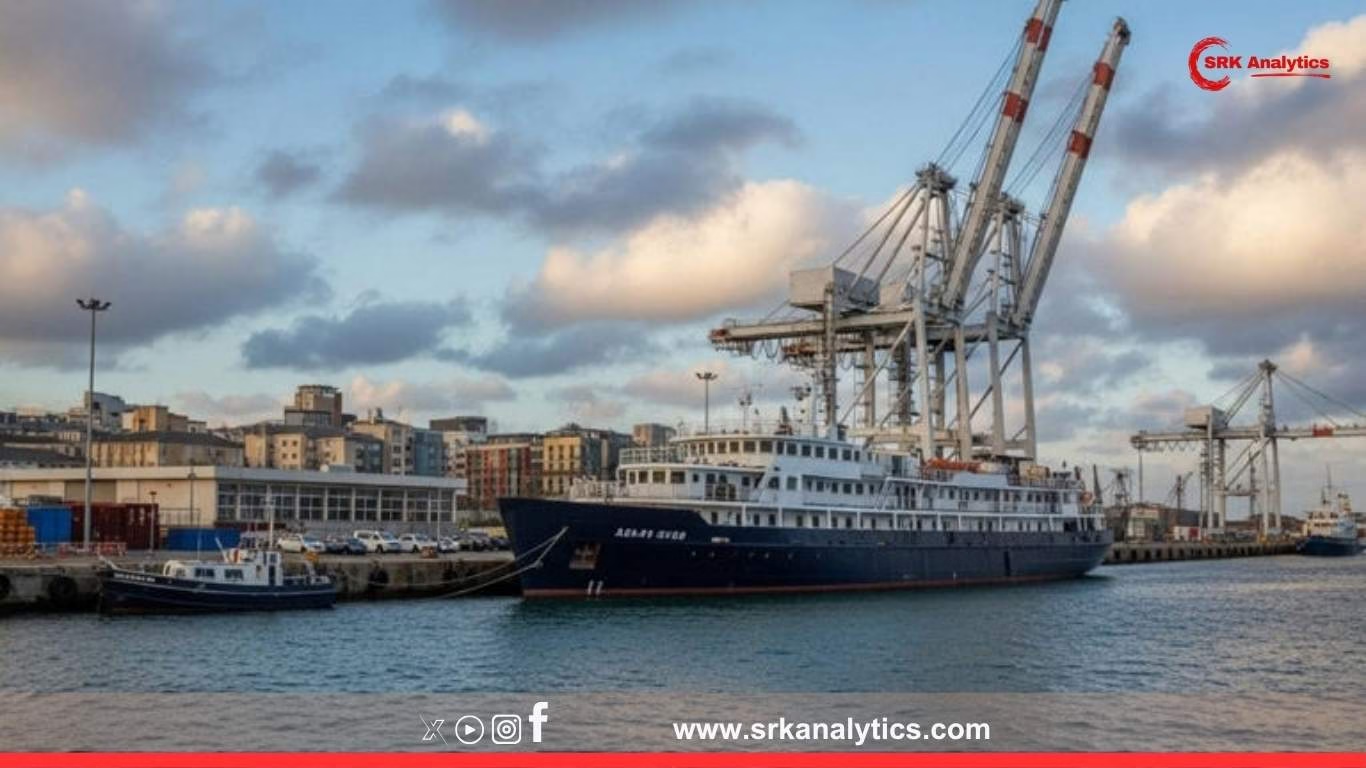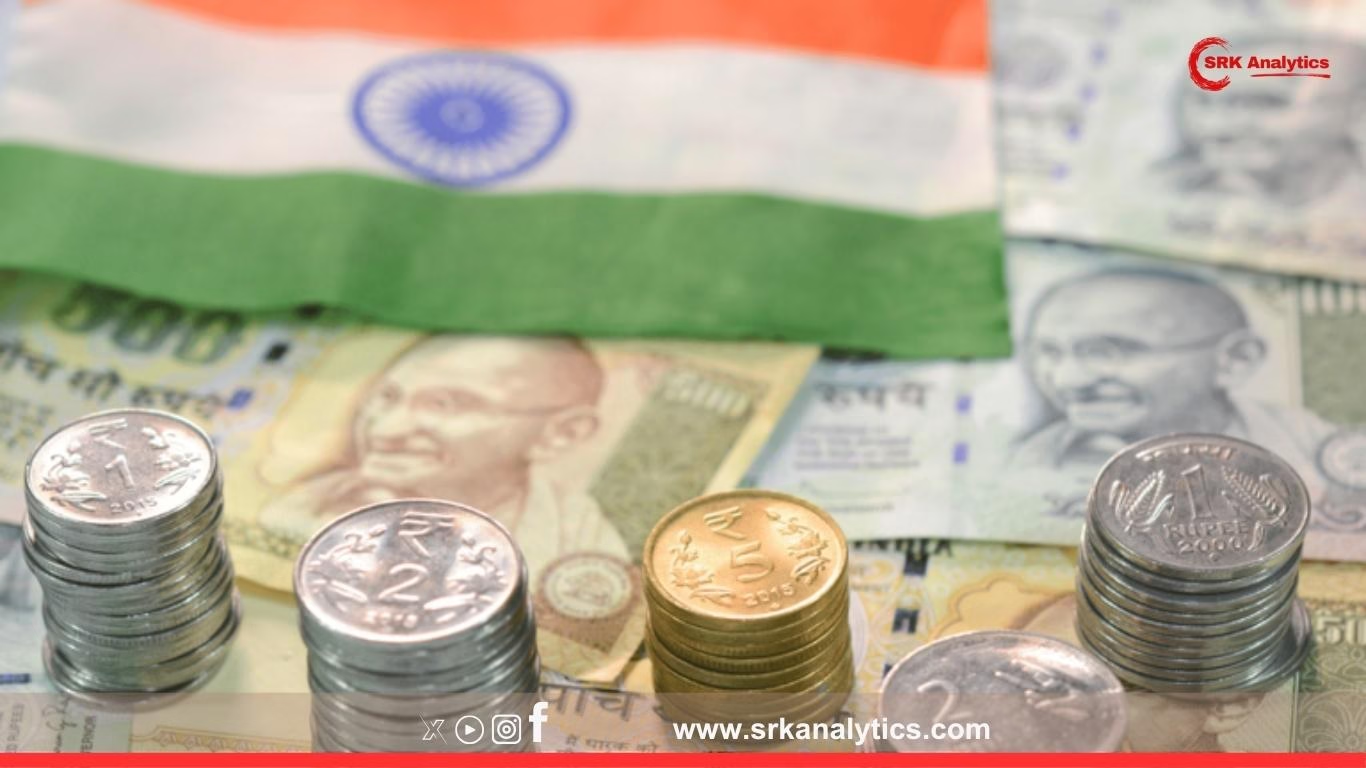India’s port sector is poised to grow at a pace faster than major global economies, driven by robust infrastructure expansion, policy reforms, and increasing trade volumes, according to a recent industry report analysing maritime growth trends till 2030. The report highlights that India’s ports are set to witness cargo traffic growth of 7-8% annually, surpassing global averages of 3-4%, cementing its position as a strategic maritime hub for global trade.
Key Highlights Of The Report
- Capacity Expansion: India’s total port capacity is projected to reach 3,200 million tonnes per annum (MTPA) by 2030, up from ~2,600 MTPA currently, due to ongoing capacity augmentation at major and non-major ports.
- Increasing Private Participation: Share of private sector investments in port projects is expected to rise to 70% by 2030, compared to 55% in 2023.
- Containerisation Growth: Container traffic is projected to grow at 9-10% CAGR, supported by rising EXIM trade, manufacturing exports, and logistics efficiency.
- Improved Turnaround Time (TRT): Average TRT at major ports has improved from 4.2 days in FY15 to 2.1 days in FY24, making Indian ports globally competitive.
Major Port Cargo Traffic Growth (FY15 – FY24)
| Year | Major Ports Cargo Traffic (Million Tonnes) | YoY Growth (%) |
|---|---|---|
| FY15 | 581 | — |
| FY18 | 679 | +5.3 |
| FY21 | 673 | -0.9 (COVID impact) |
| FY24 | 795 | +6.0 |
The report emphasised that cargo traffic has rebounded strongly post-COVID, with FY24 volumes surpassing pre-pandemic highs, led by petroleum, coal, iron ore, and container segments.
Why India’s Port Sector Will Outpace Global Growth
- Sagarmala And PM Gati Shakti: Integrated initiatives like Sagarmala and PM Gati Shakti are enhancing port connectivity, multimodal logistics, and coastal shipping efficiency.
- Manufacturing And Export Push: Make in India, PLI schemes, and FTAs are driving higher containerised export-import trade.
- Global Supply Chain Diversification: India’s increasing share in global manufacturing is boosting port throughput as companies adopt China+1 strategies.
- Policy Reforms: Recent amendments in the Major Port Authorities Act and streamlining of tariff regulations attract private investment and operational efficiency.
Global Comparison: Port Cargo Growth (2024-2030 CAGR)
| Country/Economy | Projected CAGR (%) |
|---|---|
| India | 7.5 – 8.0 |
| China | 4.0 – 4.5 |
| USA | 3.5 – 4.0 |
| EU Ports | 2.8 – 3.5 |
| Japan | 1.8 – 2.2 |
India’s port sector is expected to record the highest CAGR among major economies, reflecting its expanding trade integration and infrastructure development.
Major Port Capacity Expansion Projects
| Port | Project Detail | Additional Capacity (MTPA) | Completion Target |
|---|---|---|---|
| Jawaharlal Nehru Port (JNPA) | Fourth Container Terminal | +4.8 million TEUs | FY26 |
| Paradip Port | Western Dock Project | +25 | FY27 |
| Visakhapatnam Port | Container Terminal Expansion | +2.4 million TEUs | FY26 |
| Kandla (Deendayal Port) | Multipurpose Cargo Berths | +22 | FY28 |
Container Traffic Outlook
India’s container traffic is projected to reach 50 million TEUs by 2030, up from ~20 million TEUs in FY24, driven by:
- Electronics, pharma, and engineering goods exports
- Cold chain and reefer containerisation for agri and seafood exports
- Coastal container traffic growth for domestic cargo movement
Port-led Industrialisation And Economic Impact
According to the report, port-led development is expected to:
- Create 2 million direct and indirect jobs by 2030 through industrial clusters near ports
- Contribute an additional 1.5-2% to India’s GDP growth annually by reducing logistics costs and enhancing trade competitiveness
Challenges And Risks
While the outlook remains robust, key challenges highlighted include:
- Delay in environmental and land approvals affecting project timelines
- Hinterland connectivity bottlenecks despite policy focus
- Global trade volatility and protectionist policies impacting EXIM volumes
- Capacity utilisation gaps at certain non-major ports due to regional competition
Government’s Policy Focus Areas
The report suggested areas of policy action to sustain high growth:
- Fast-tracking Dedicated Freight Corridors (DFCs) to connect ports with hinterlands efficiently
- Expanding port automation and digitalisation for faster cargo handling
- Promoting coastal shipping and inland waterways to reduce carbon footprint
- Developing port-linked industrial clusters to attract manufacturing and logistics investments
Expert Views
An industry expert quoted in the report said:
“India’s port sector is entering a golden era of growth, underpinned by strong policy support, rising trade integration, and global supply chain shifts. Timely execution of capacity and connectivity projects will be critical to realise its full potential.”
Stock Market And Business Implications
Major listed port operators like Adani Ports, JSW Infrastructure, and Gujarat Pipavav Port stand to benefit from rising cargo throughput, container traffic, and private participation in port expansion projects.
| Company | Current Cargo Capacity (MTPA) | Planned Capacity Addition by FY30 (MTPA) |
|---|---|---|
| Adani Ports | 580 | +200 |
| JSW Infrastructure | 160 | +60 |
| Gujarat Pipavav | 45 | +20 |
Conclusion
India’s port sector is set to outpace major global economies with annual cargo traffic growth of 7-8% and container growth of 9-10%, driven by strategic policy reforms, infrastructure augmentation, and manufacturing-led trade expansion. This positions India as an emerging maritime hub and a critical node in the future of global supply chains.
Disclaimer
This news content is for informational purposes only. It is not intended as investment advice. Readers are advised to consult financial experts before making any business or investment decisions based on this report.











